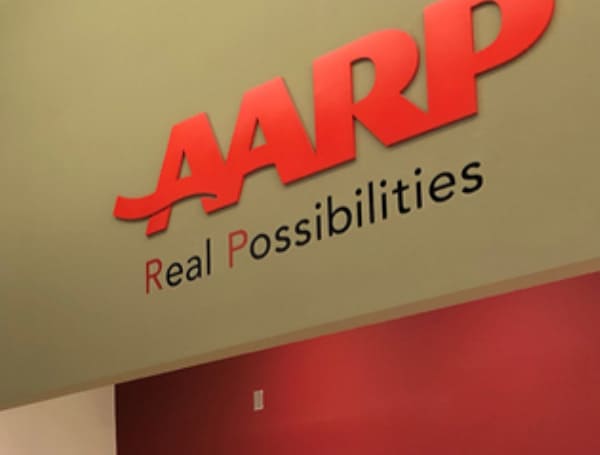Harry Wilmerding
The American Association of Retired Persons (AARP) raked in massive profits in 2020, mostly from royalties on branded health insurance policies, not memberships, according to company financial documents.
AARP’s 2020 Form 990 shows that the organization reported $1.6 billion in revenue, with roughly $1 billion, or over 60%, from royalty revenue. Meanwhile, membership dues contributed under 20% of total revenue.
AARP’s 2019 Form 990 reported $1.72 billion in revenue, with royalties making up nearly 56% of revenue while membership dues contributed just 17%.
“The organization’s business effectively overcharges seniors who purchase insurance coverage from the organization — including Medicare supplemental policies, called Medigap insurance — to fund its own operations,” Juniper Research Group Founder and Chief Executive Chris Jacobs wrote in an August 2020 American Commitment report.
AARP is designated a 501(c)(4) nonprofit organization by the IRS, but the company has consistently made large profits due to the group’s marketing practices, according to the report.
“AARP functions less as a membership organization than as a marketing conglomerate with a liberal advocacy group on the side,” Jacobs told the Daily Caller News Foundation. “It charges so little for membership because it makes most of its money selling products to its members and taking a percentage of the cut — starting with insurance products sold by UnitedHealth.”
The largest contributor to AARP’s royalty revenue is UnitedHealth Group, Jacobs told the DCNF.
AARP reported $283.7 million in revenue from UnitedHealth in 2007, around 57% of total revenue from royalties that year, according to the report. In 2017, AARP collected over $627 million from the health care giant, almost 70% of AARP’s royalty income that year.
UnitedHealth sells three separate health insurance policies using the AARP brand: Medicare Advantage, Medicare Part D, and Medigap, Jacobs told the DCNF. UnitedHealth pays AARP a “royalty fee” because it uses the organization’s brand to sell insurance.
The Medigap policies bring in the most revenue for AARP, earning it 4.95% of premiums paid on every dollar, Jacobs said. On the other hand, members using Medicare Advantage and Medicare Part D plans pay UnitedHealth, when then gives AARP only a flat licensing fee.
“For every additional dollar seniors pay in premiums, AARP adds more to its bottom line. This commission-type arrangement gives AARP every incentive to sell its members products they don’t want or need, just to make more money itself—the opposite of the way a supposedly consumer-based organization should be acting,” Jacobs said.
AARP did not respond to the DCNF’s request for comment.
AARP has been sued four times in the last four years by its members over its royalty fee structure, according to court documents. Courts ruled in favor of AARP in three of these lawsuits.
Most recently, plaintiffs Jeremy Nichols and Leon Wilde led a class action claiming AARP and UnitedHealth made millions of dollars by illegally charging royalty fees to California senior citizens.
Specifically, the plaintiffs claimed that AARP mischaracterized fees paid by UnitedHealth as “royalty fees” to avoid taxes on income generated through the sale of insurance policies.
“Calling the commission a ‘royalty’ is merely a fiction created by Defendants to further their illegal scheme,” the plaintiffs said.
The House Ways and Means Committee investigated AARP in 2011, generating a report which was submitted to the IRS. The report highlighted key issues with AARP’s structure, including its royalty fee system.
“As this report has shown, AARP may be in violation of a number of the requirements imposed on organizations operating under a federal tax exemption,” the report stated.
“In particular, one might question whether AARP is primarily operating to promote the common good and general welfare given the fact the AARP has become increasingly dependent on hundreds of millions of dollars in royalty revenue from insurance companies,” the report read.
To be designated a 501(c)(4) organization, one must “not be organized for profit and must be operated exclusively to promote social welfare,” according to the IRS.
Check out Tampafp.com for Politics, Tampa Local News, Sports, and National Headlines. Support journalism by clicking here to our GoFundMe or sign up for our free newsletter by clicking here.
Android Users, Click Here To Download The Free Press App And Never Miss A Story. It’s Free And Coming To Apple Users Soon.

